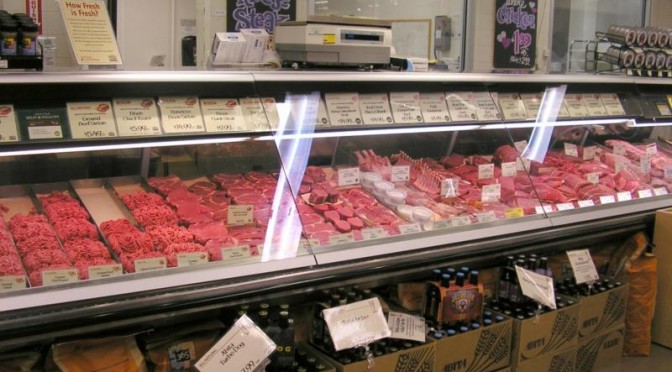4 Dangerous Substances Big Ag Pumps Into Your Supermarket Meat
Via EcoWatch
Ever wondered what’s in your supermarket meat? It is no secret that in the war against meat pathogens in commercial U.S. meat production, the pathogens are winning. The logical result of the tons of antibiotics Big Meat gives livestock (not because they are sick, but to fatten them up) is clear: antibiotics that no longer work against antibiotic-resistant diseases like staph (MRSA), enterococci (VRE) and C.difficile. Antibiotic-resistant infections, once limited to hospitals and nursing homes, can now be acquired in the community, Florida public beaches and on the highway behind a poultry truck.
1. Chlorine Baths
If you want to know the most problematic ingredients in our food supply, just look at the items the European Union boycotts, starting with genetically modified organisms (GMOs), hormone beef and chicken dipped in chlorine baths. U.S. Big Food lobbyists are pushing hard to circumvent the European bans, says MintPress News, especially “bleached chicken.”
2. Ammonia
It has only been two years since the nation’s stomach churned when it saw photos of “pink slime”oozing out of processing tubes and bound for U.S. dinner tables and the National School Lunch Program and display proudly as supermarket meat. Looking like human intestines, “lean, finely textured beef” (LFTB) was made from unwanted beef “trim” and treated with puffs of ammonia gas to retard the growth of E. coli. While the company making most of the nation’s LFTB, Beef Products Inc. (BPI) shuttered three plants and laid off hundreds of employees two years ago, it is since fighting back and has brought a lawsuit against ABC news.
3. Carbon Monoxide
Eight years ago there was an uproar about Big Meat using gases like carbon monoxide to color meat an unnatural red even as it was aging on the shelf. The brown color meat assumes after a few hours is as harmless as a sliced apple turning brown, says the American Meat Institute. But like mercury in tuna or ractopamine in beef, pork and turkey, Big Food didn’t blink or make any changes because it knew the contretemps would blow over—and it did. Thank you for your short memory, John Q. Public. “Modified atmosphere packaging” of meat, using assorted gases, is still a mainstay of meat production and “safe and suitable” in meat production, according to the FSIS report.
Unless you’re a chemist, you may not recognize some of the other ingredients in the 2014 FSIS directive, but that doesn’t mean you want to ingest them. Take “cetylpyridinium with propylene glycol for bacterial control.” While cetylpyridinium is a germ-killing compound found in mouthwashes, toothpastes and nasal sprays, in meat production it is combined with propylene glycol to “treat the surface of raw poultry carcasses or parts (skin-on or skinless).” Yum.
How about, “aqueous solution of sodium octanoate, potassium octanoate or octanoic acid and either glycerin and/or propylene glycol and/or a Polysorbate surface active agent,” also to kill germs?
And, does anyone want to eat “hen, cock, mature turkey, mature duck, mature goose and mature guinea” into whose raw meat and tissue has been injected protease produced from the mold Aspergillus for tenderness?
4. Bacteriophages
An under-reported way in which Big Food is seeking to kill meat pathogens, especially antibiotic-resistant pathogens, is with bacteriophages. Phages are viruses that infect and kill bacteria, essentially turning the bacteria cell into a phage production factory until the bacteria cell bursts, releasing hundreds of copies of new phages, which go on to infect and kill more bacteria. Phages, discovered in 1919, were used to treat bacterial infections but fell out of favor when antibiotics became widely available in the 1940s. Antibiotics had the advantage of attacking more than one bacterium at the same time and were not usually recognized by a patient’s immune system, so they could be used over and over in the same person to fight bacterial infection without producing any immune response. Welcome to supermarket meat.

